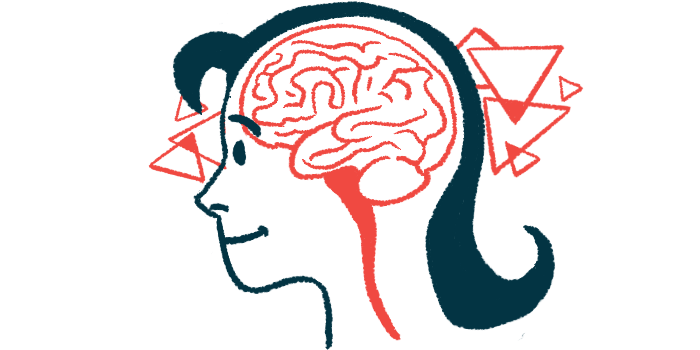Spinal cord attacks predict worse disability in NMOSD, MOGAD
Anti-AQP4 antibodies linked to greater disability risk in MOGAD, per study

Experiencing attacks marked by transverse myelitis, or spinal cord inflammation, significantly increases the chance of worse disability in people with neuromyelitis optica spectrum disorder (NMOSD) patients and the related condition myelin oligodendrocyte glycoprotein antibody-associated disease (MOGAD).
Those are the findings of a study analyzing data from a Portuguese national registry of NMOSD and MOGAD patients that also showed that having NMOSD linked to antibodies against the AQP4 protein is significantly associated with a higher risk of worse disability relative to MOGAD.
“This study highlights that AQP4 antibody positivity and TM [transverse myelitis] attacks predict increased disability … replicating the findings from previous large-scale [studies],” the researchers wrote.
The study, “Prognostic factors associated with disability in a cohort of neuromyelitis optica spectrum disorder and MOG-associated disease from a nationwide Portuguese registry,” was published in the Journal of the Neurological Sciences.
NMOSD and MOGAD are two rare autoimmune diseases marked by abnormal immune responses against healthy cells of the central nervous system (the brain and spinal cord). In both cases, the immune attacks can lead to transverse myelitis and/or optic neuritis, or inflammation of the optic nerve, which relays signals between the brain and the eyes.
Self-reactive antibodies
Most NMOSD cases are associated with self-reactive antibodies against AQP4, a protein found at the surface of neuron-supporting cells. MOGAD is characterized by self-reactive antibodies targeting myelin oligodendrocyte glycoprotein (MOG), which is present at the surface of the fatty sheath that surrounds nerve fibers and the cells that produce it.
NMOSD patients positive for anti-AQP4 antibodies appear to recover poorly from each relapse, or attack, especially those affecting the spinal cord, while people with MOGAD typically recover well from these attacks.
Patient registries that include long-term follow-ups provide an ideal platform to confirm and identity predictors of worse prognosis.
The team of researchers in Portugal analyzed data from a national registry of NMOSD and MOGAD patients to identify predictors of relapses and worse disability.
A total of 180 patients joined the registry in 2019. In late 2022, the researchers collected patient information from the previous three years.
At study’s start, 42.8% of patients had AQP4-related NMOSD, 20% had NMOSD but were negative for anti-AQP4 antibodies, and 37.2% had MOGAD. The most common first manifestation was myelitis in AQP4-related NMOSD cases (45.4%) and optic neuritis in MOGAD patients (44.8%).
Patients showing worse disability — reflected by a score of 7 to 10 on the expanded disability status scale (EDSS), in which higher scores indicate greater disability — belonged to the AQP4-related NMOSD group.
Of the 80 patients who completed the three-year follow-up period, 22.5% reached an EDSS score of 6 or higher, indicating at least the need of a walking aid. A total of 25 relapses were reported in 20 patients, and 56% affected the spinal cord.
MOGAD was significantly associated with a stable disease course and with new relapses that were milder in severity. In contrast, most patients who experienced additional relapses during follow-up had AQP4-related NMOSD.
All patients with EDSS scores of 6 or higher were on immunosuppressive treatments by the end of the follow-up. Most (94.1%) of the patients who reached such a severe disability level experienced at least one attack in the form of myelitis.
EDSS scores
In NMOSD patients, reaching an EDSS score of 6 or higher was significantly associated with a higher EDSS score after the first attack and a history of more than one relapse. None of the other evaluated factors, including disease duration, age, previous treatment, and number of relapses, was found to predict disability outcomes.
In the MOGAD group, patients reaching worse disability were significantly older than those with milder disability (mean age of 64 vs. 31).
Statistical analyses showed that AQP4-related NMOSD was significantly associated with a 2.61 times higher chance of achieving an EDSS score of 6 or higher. In turn, MOGAD was significantly linked to an 85% greater chance of having milder disability at last follow-up, reflected by an EDSS score of up to 6.
No significant associations were detected for NMOSD patients negative for anti-AQP4 antibodies.
A statistical model that included the self-reactive antibody status and transverse myelitis attacks was able to successfully identify 72.2% of the patients who achieved severe disability (EDSS score of 6 or higher).
The model also showed that transverse myelitis attacks significantly increased the risk of reaching severe disability by 6.57 times, and that MOGAD reduced such a risk by about nine times relative to AQP4-related NMOSD.
“We found that [anti-AQP4 antibody] positivity and the occurrence of TM attacks were predictive of increased disability,” the researchers wrote, adding that “other studies have found the same result.”
Data also showed that “MOGAD is associated with less disability compared to [AQP4-related NMOSD] … [which] accounts for most cases of relapsing disease,” the team wrote.








